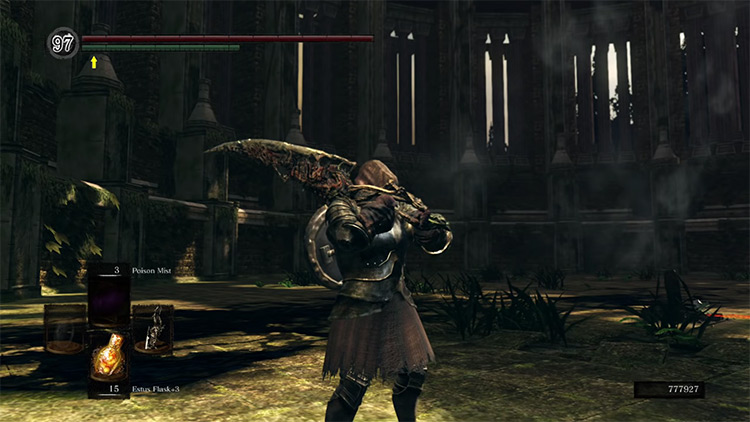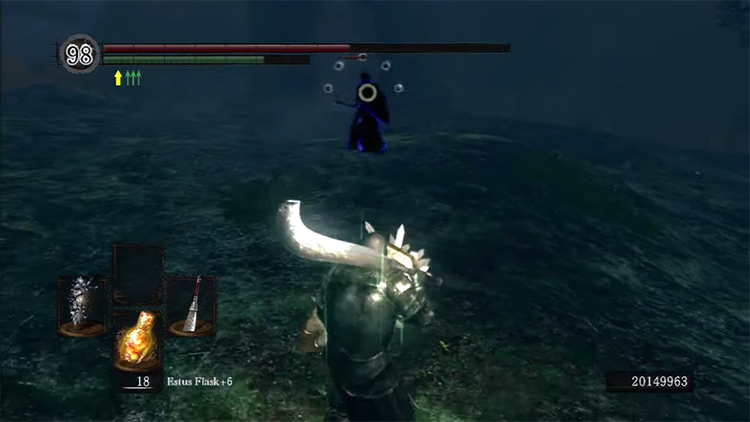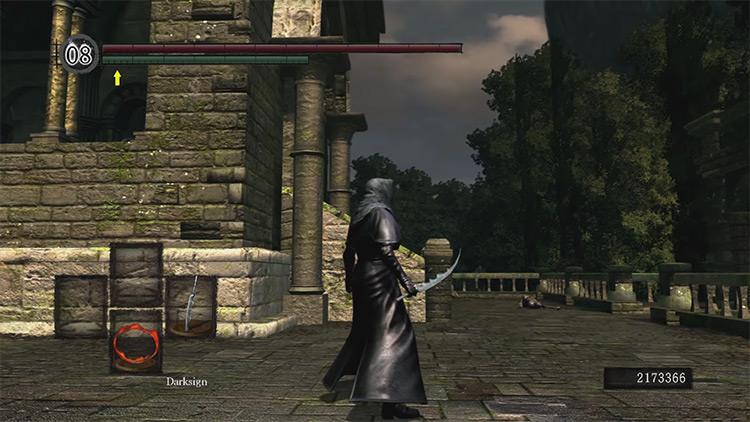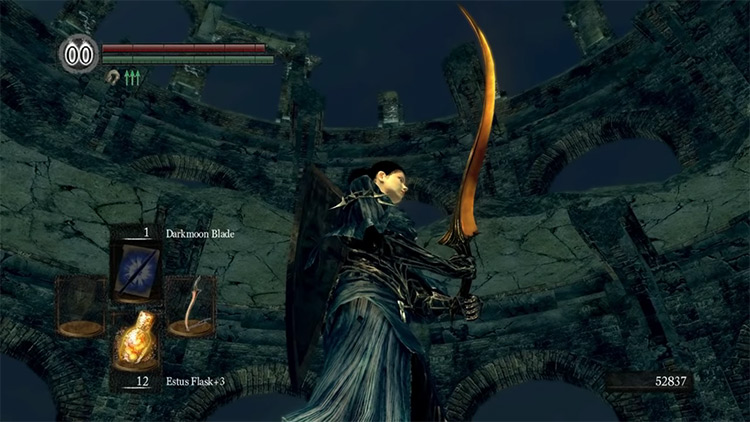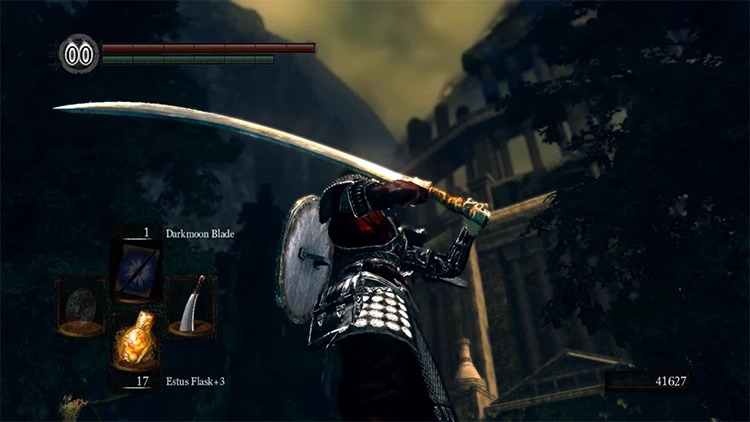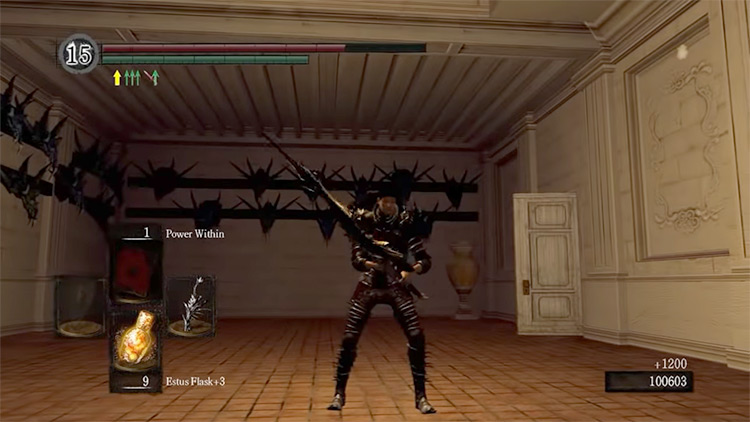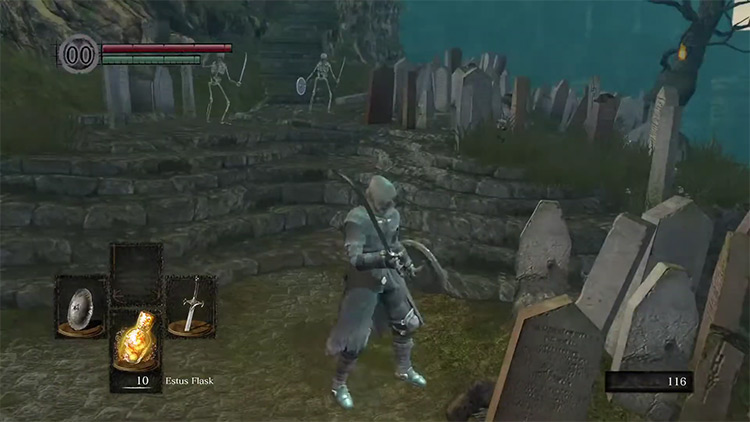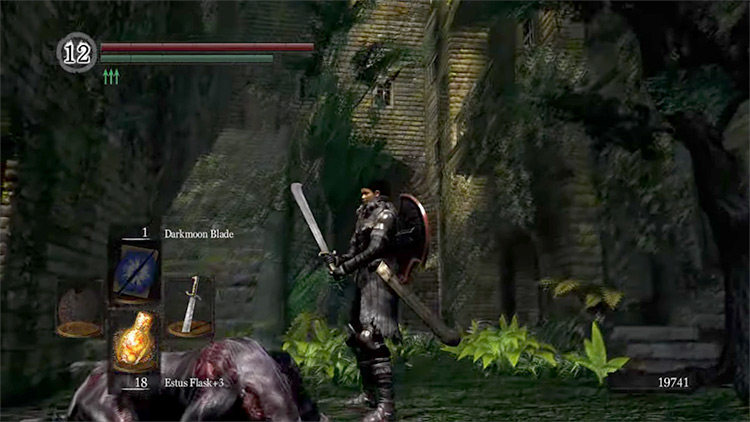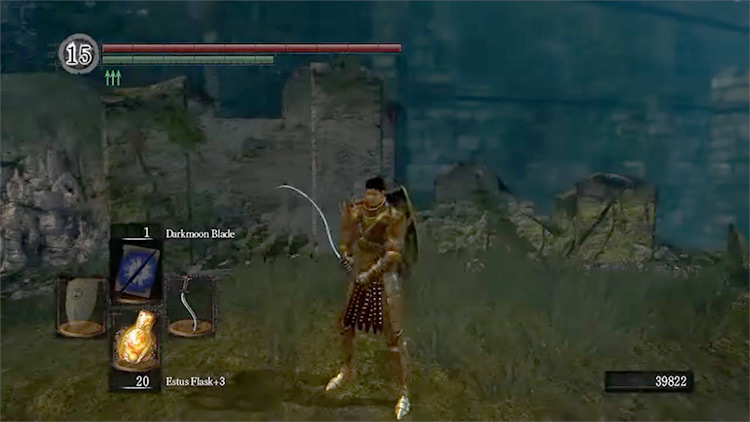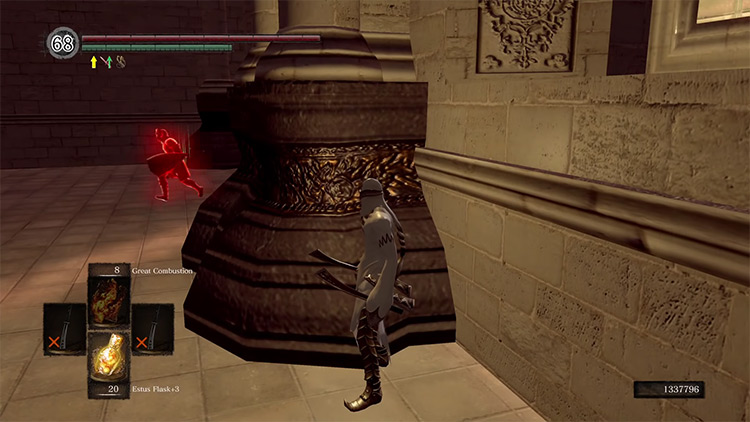This subset of weapons focuses mostly on the dexterous side of things, using big, sweeping swings that dance-like moves to keep enemies on-guard – and to deal continuous streams of damage. Curved swords in Dark Souls are much more about how you attack, rather than strictly about dealing damage. And curved swords are perfect for dex builds, or players who like to enchant and augment their weapons. In DS1 there are 10 different curved swords in total, so let’s take a look at how they all stack up & where you can get each one.
10. Gravelord Sword
It’s very unfortunate when a really cool-looking weapon doesn’t live up to its image. The Gravelord Sword is one example of this. It has a wicked design and backstory. But despite the bone motif and awesome curved blade, it can’t quite hack it when compared to the rest of the curved swords on offer. The Gravelord Sword is one of only a few weapons that can inflict Toxic, but it also has terrible scaling and low overall damage. Granted it has its uses, like getting the Rite of Kindling early. And in the early game it can be powerful. But aside from niche uses, the Gravelord Sword is probably better left in the tomb from which it comes. How to Obtain: Join the Gravelord Servant covenant found deep in the Catacombs.
9. Server
You thought it was called “Sever” too, didn’t you? Mistakable name aside, this beefy curved sword is wholly unremarkable in terms of damage, scaling, and long-term use. However, it does have an ability that only a few other weapons in the game have: It can restore HP with successful attacks. Granted it doesn’t recover much, only about 7 hit points per swing. But to the skilled or desperate that’s probably going to be enough. The novelty of it alone might be enough for some players to pick it up. It’s not hard to get, anyway. How to Obtain: Found in a group of leeches near the Great Hollow Bonfire in Blighttown.
8. Jagged Ghost Blade
Much like the Gravelord Sword, the Jagged Ghost Blade is a curved sword that has a few very express purposes. It’s not the best weapon in the game, and most likely not one to use as a primary arm. But what niche purpose it can serve, it serves very well. First, it can inflict bleed fairly well (if you’re into that). And second, it has an innate curse on it, meaning it can easily handle ghost enemies. Early on in the game this weapon is pretty good. But as you get on with it, you’ll find better stuff. Getting through New Londo without having to deal with personal curses is a blessing, though. And the bleed can be great as well. How to Obtain: Ghost enemies in New Londo drop this weapon (which is strange considering it’s so good at defeating them).
7. Gold Tracer
There’s not a lot of weapons designed to be held in the player’s off-hand. The Gold Tracer is one of them, eschewing a shield in favor of another weapon. It has a few unique attacks that can stew from the opposite hand, which means that with the right set up you can create a two-handed dancer build – that comes at the cost of no real active defense. The Gold Tracer causes Bleed, too. So if you play it right you can have a status affecting weapon in each hand. The dexterity requirement on the Tracer is pretty high, though. If you’re all about delivering lots of attacks at the cost of defense, this is a weapon to try out. How to Obtain: Exchange the Soul of Artorias with Lord’s Blade Ciaran in the back half of the DLC area.
6. Murakumo
It seems like every subset of weapons has one that’s a big chunker with the explicit purpose of breaking through the enemy’s defenses by sheer weight alone. The Murakumo is that sword. It’s the heaviest of all the curved swords, and requires a lot of strength because of it. But in exchange, the Murakumo can brute its way through defenses like fire through paper. If you’re fighting something (or someone) with high poise, then bust out the Murakumo and smash them into the ground! It feels pretty good. The Murakumo is best used in open areas, as being surrounded by walls means a lot of banging around and leaving yourself open. How to Obtain: Dropped by the Giant Skeletons in the graveyard near Firelink Shrine.
5. Quelaag’s Furysword
It’s not just a sword, it’s a furysword. That means there’s a lot of anger and fire behind it. Which all makes sense when you look at the source of the sword. Quelaag’s Furysword is fire-elemental and specializes in dealing lots of damage in a short period of time. It’s very quick, is what I’m saying. In exchange for this flurry, the Furysword can’t really stagger enemies, so you’ll have to really pay attention. But in skilled hands the Furysword can decimate enemies. It’s a great PVE weapon, but very tricky to use in PVP. There’s a learning curve to the Furysword too – but if you get to the top of that bend, you’ll find yourself doing lots of damage in short order. How to Obtain: Feed the Soul of Quelaag to any +10 curved sword.
4. Scimitar
When you think ‘curved sword’ the Scimitar is probably the first thing that comes to mind. It’s the progenitor of all crescent-shaped blades. No surprise then that it makes an appearance here. It’s a weapon you can get very early, and can last you quite a long while – even maybe through the whole game if you play your cards right. The Scimitar is a simple weapon, but effective. It needs less strength to use than the other classic curved sword, and scales very well with dexterity. Its attack animations are smooth and can deal good, continuous damage. Plus it’s also a great weapon for enchanting or augmenting! Really a great example of how simplicity can be better. How to Obtain: The Wanderer class starts with it, and skeletons drop them frequently.
3. Falchion
The Falchion is the other classic curved sword, and subsequent example of effective simplicity. This is heavier than the Scimitar, but does more damage. They have the same moves and flourishes, but overall, the Falchion is the better weapon – though ultimately the difference between the stats is negligible. The Falchion uses much less stamina when it attacks, though, giving it the edge between the two. Being able to attack more efficiently means a lot in a game where you have to always be aware of how much you can attack, before getting too tired to do so. And the Falchion also has a better reach, plus it likes to be enchanted just a little bit more. How to Obtain: A common drop from skeletons, and one can be found in the swamps of Blighttown.
2. Shotel
The Shotel is the curved sword equivalent of a screaming man who rushes at you and stabs you mercilessly. The Shotel has the very unique power of completely ignoring guarding. It blows right through shields like they don’t exist. No need to roll around, bide your time, or any of that silly stuff that normal swords require when you’re fighting against guarding guys. Really, the Shotel is one of the quintessential PVP weapons due to its anti-shield stance. And watch out if you’re fighting somebody with Shotels – your shields are meaningless! It also scales fairly well, for what that’s worth. How to Obtain: Found on a low platform in Sen’s Fortress and requires falling to get it.
1. Painted Guardian Sword
It’s unfortunate that you have to wait so long for this weapon. It’s a great sword, not only for those who like curved weapons, but for dex builds and folks who enjoy augmenting their weapons. The Painted Guardian Sword is a curved blade that can cause bleeding, has fantastic dexterity scaling, and is very fast. If you’re into curved swords, then this is the gold standard of what you should be looking forward to. The only real downside to the Painted Guardian Sword is that it doesn’t have much reach. You’ll have to get much closer to your enemies than you’d probably like to. Still, the amount of damage you can deal is pretty fantastic. And the Painted Guardian Sword is a real gem of a weapon no matter how you look at it. How to Obtain: This weapon drops from the Painting Guardians that hang around the big painting in Anor Londo.
